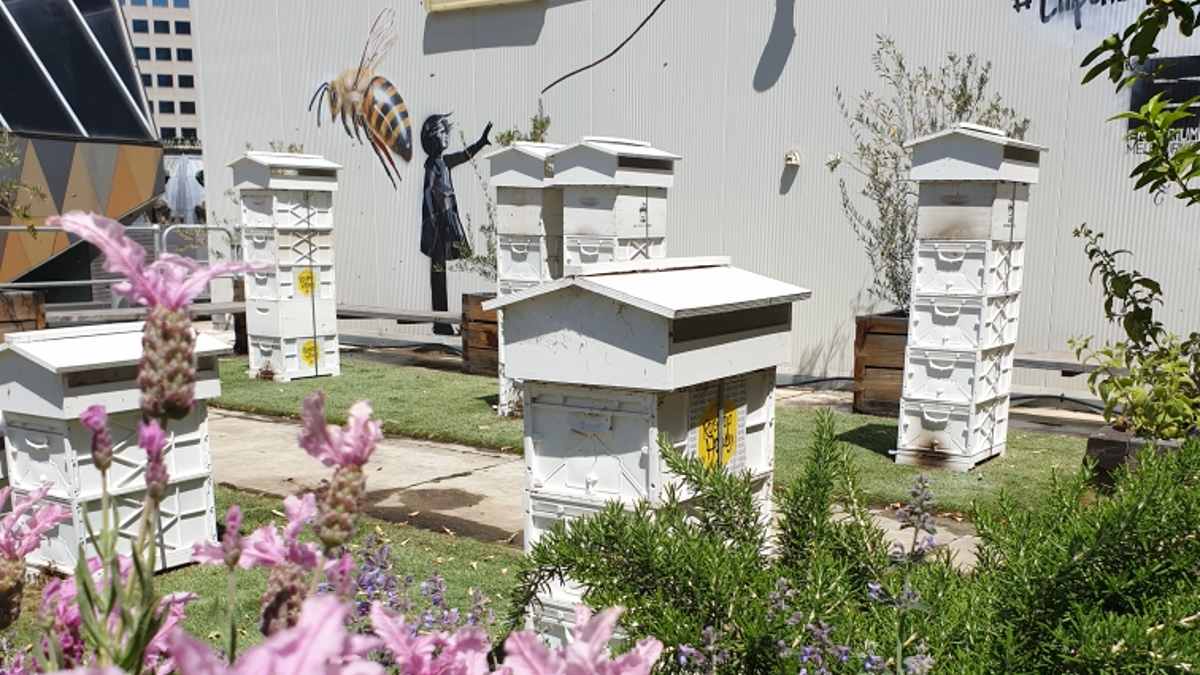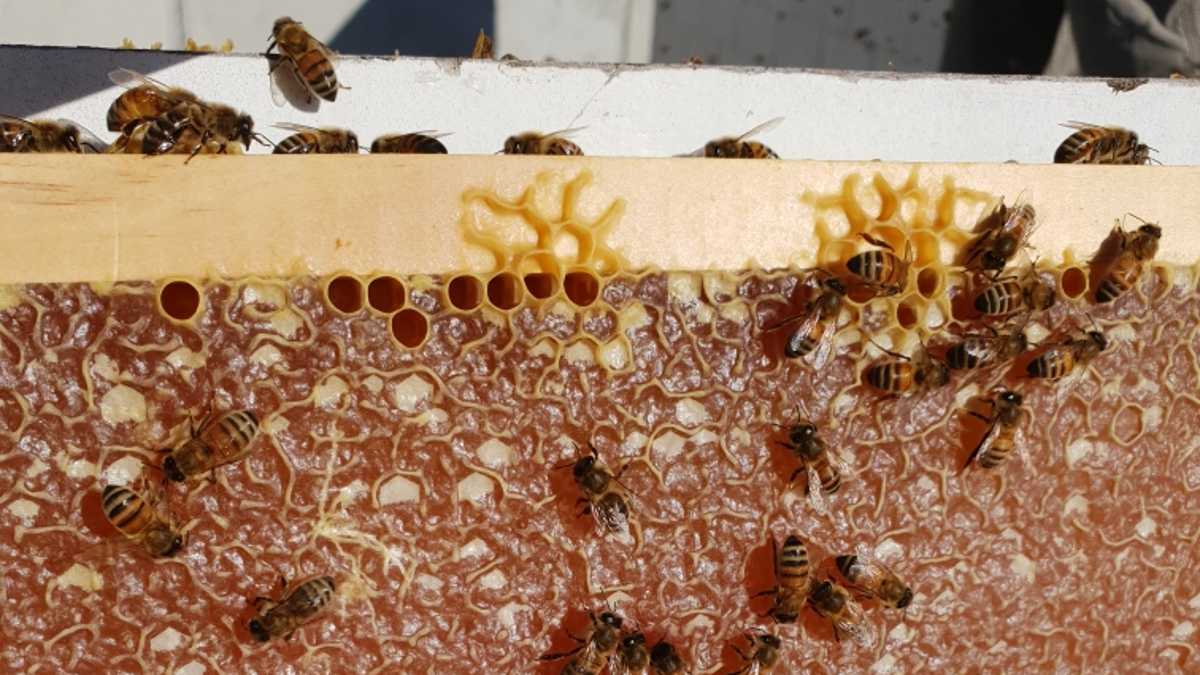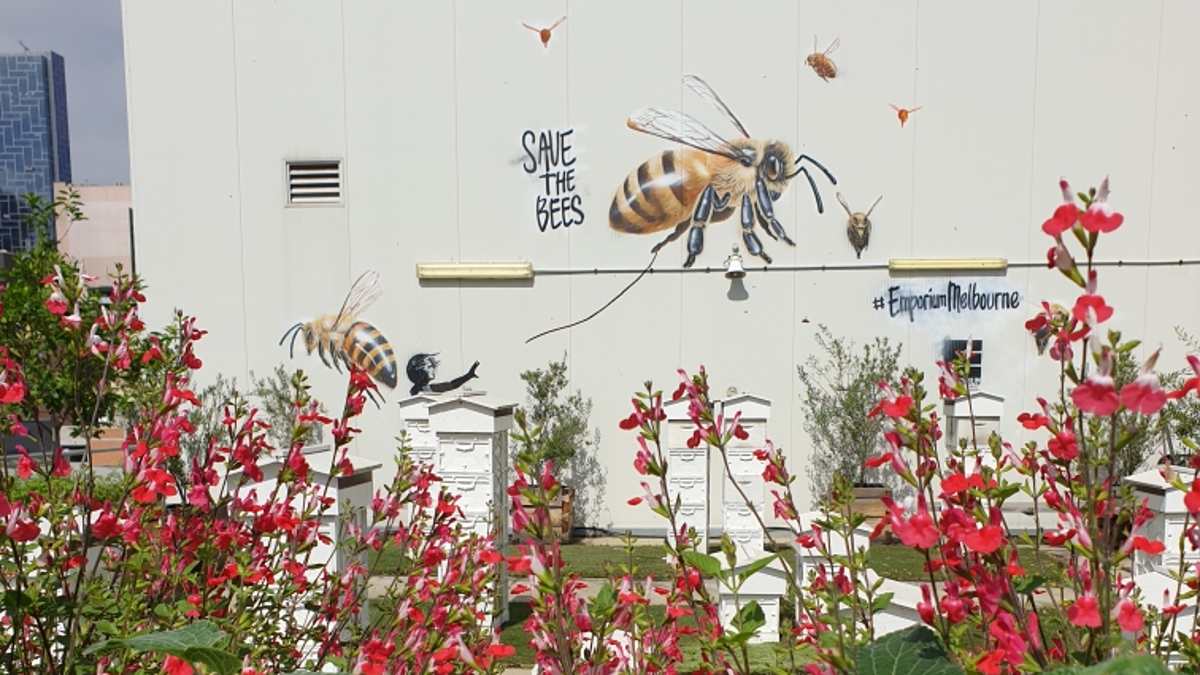Australians have fallen in love with air fryers. Discover how they work, their energy efficiency, what to avoid and which type is best for you.
Urban beekeeping buzz: hives are headed back to the city

Melbourne might feel like a concrete jungle, but the city provides rich pickings (and sweet rewards) for local urban apiarists and their millions of bees.
Every day, millions of workers across Melbourne wake up early, swarm through the city’s streets, labour tirelessly, then trek back home to sleep and do it all again the next day.
The difference is these workers have six legs, wings, and are roughly one centimetre in size. These workers are bees, and they’re tasked with what is arguably one of the most important jobs in the world.
“It’s estimated that two out of every three mouthfuls of food that we eat are a result of bee pollination,” says Mat Lumalasi from Melbourne City Rooftop Honey, a group of local beekeepers who manage an estimated 7.8 million bees across multiple hives in Melbourne.
Amidst a new wave of interest from the public, urban beekeeping has grown in profile over the last decade, providing an opportunity for city folk to reconnect with their food and provide a lifeline as Australia’s bees face their most serious threat yet.
Beekeeping at the Club
At RACV Healesville Country Club and Resort, the team have embraced local honey production.
Golf Course Manager, Tim Pierce, has been managing beehives at Healesville for around seven years, having stumbled into the art by accident when he came across a swarm on the property.
These days he’s a licenced beekeeper and manages multiple hives, producing enough honey to completely supply the resort’s kitchens, including the signature contemporary restaurant Banyalla.
Himanshu Sharda, Executive Chef at RACV Healesville Country Club and Resort, says the onsite honey is used in a variety of dishes, including in salad dressings, desserts and as a sweetener.
The showpiece, however, is the frames of honeycomb that’s hung from the breakfast buffet for guests to serve fresh on their toast or cereal.
Neighbourhood buzz
Melbourne City Rooftop Honey is responsible for around 130 hives across the city, in suburbs like Footscray, Prahran, Northcote, Fitzroy, South Yarra, Carlton and in numerous locations throughout the CBD.
The organisation works with local communities to host their hives, with an exceptional amount of interest from the public. “It got to a point where we were at capacity,” says Lumalasi. “We have recommended lots of people then take on the challenge of having their own hive and with that we're able to then provide education.”
Chances are, if you live in Melbourne, you’ve probably walked right past one of their hives and not realised. “Just because we have 60,000 bees in a beehive doesn't mean you end up with 60,000 bees in your garden buzzing around,” says Lumalasi.
In urban environments, hives are placed facing away from frequented areas or at a height to minimise their impact on their human neighbours. At most, you might see a few bees around the hives’ entrances – if you see them at all.
Risky ‘beesiness’
Despite their importance in the food chain, bees around the world – as well as in Australia – are under threat.
The Varroa mite is one of the biggest threats to the existence of bees, killing individual insects and contributing to the collapse of entire bee colonies. “If we were to scale a bee up to a human size, the Varroa mite would be the equivalent to having a parasite the size of a dinner plate stuck to our abdomen,” says Lumalasi.
Until recently, Australia was the last country in the world to be free of the parasite. That changed when the mite was detected at the in New South Wales on June 24 2022, with local beekeepers setting up exclusion zones to try and curb the infestation (which.
While Australia has successfully eradicated Varroa mite outbreaks in the past, urban beekeeping presents one potential solution to the crisis. “With the Varroa crisis that's unravelling as we speak it's all about migratory beekeeping… thousands and thousands of hives being moved around,” says Dowse. “You don't have that in the city. If we had a crisis here it would unravel a lot more slowly than it is up in Newcastle at the moment, basically because we are stationary beekeepers.”
“And that's actually healthier for bees.”

Tim Pierce manages the beehives at RACV Healesville Country Club Resort, producing enough honey to supply the resort's restaurants. Photo: Shannon Morris
City honey
To understand the difference between honey produced by bees in urban and rural areas, you first need to understand a little about conventional beekeeping practises.
Traditionally, the honey you buy from the supermarket shelf comes from a commercial beekeeping venture where multiple beehives are moved around a large area to follow a single type of flowering plant. In turn, this produces a fairly uniform flavour of honey as bees are primarily only collecting one type of pollen.
Urban hives aren’t anywhere near as mobile – but their bees are. “What we see in suburbia is the bees being able to fly quite comfortably for five kilometres from the hive,” says Lumalasi.
In the city, where bees go and what flowers they visit is entirely up to them, with an abundance of nectar sources available thanks to public and private gardens. “
The result is ‘polyfloral' honeys that have their flavour profile determined by the bees – not their beekeepers.
“We have seen evidence that bees have preferences of different nectars,” says Lumalasi. “We know for example that bees really enjoy nectar from citrus plants as it has stimulating, caffeine-like kick for the bees.”
Not only does urban beekeeping produce great tasting honey, there’s also evidence that having a nearby hive can encourage plants in your garden to produce more flowers and more fruit and vegetables, as well as anecdotal reports than consuming local honey can have health benefits.
“We have a lot of people that we interact with who swear to us that eating local honey is helping their hayfever immensely,” says Lumalasi, though he adds that “medically speaking, it’s still questionable.”

Beehives have long been integrated in human settlements, with cities providing bees with plenty of nectar. Photo: Phil Huynh
An old art brought back to life
Nic Dowse – otherwise known as Honey Fingers – is another local urban beekeeper managing about 30 beehives across the city’s inner north. He says that while urban beekeeping has surged in popularity recently, the art is older than you might think.
“In many places historically, and even now in some traditional villages in Eastern Europe or around the Mediterranean, bees were incorporated into the architecture of cities,” he says.
“If you look through certain villages in Turkey you can see, for example, hives hanging from the eaves of buildings or in specially built little houses in the back.”
He believes that the return of beekeeping to our cities is part of a deeper desire for society to reconnect with the planet, a planet of which an estimated 75 per cent of crops either rely on or benefit from pollinators, including bees.
“I think that we understand… consciously or not, that we live in a kind of mutual or symbiotic relationship with bees, and we always have,” Dowse says.
“People I think, are starting to realise that the health of these small creatures and the ecosystems and food webs that they're intricately a part of, including humanity's food web, is really important.”
Note from the editor: urban beekeeper Nic Dowse is of no relation to the author.





